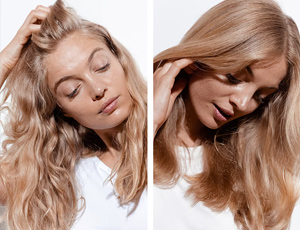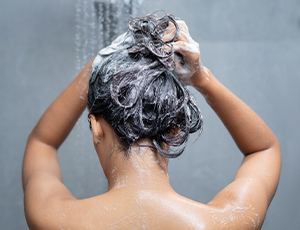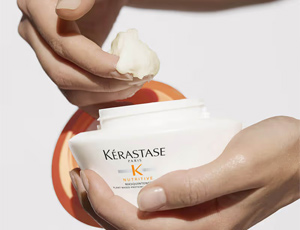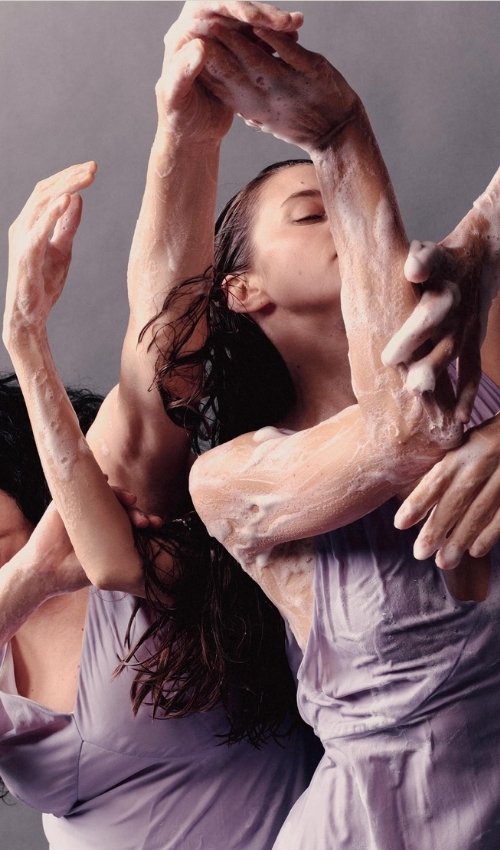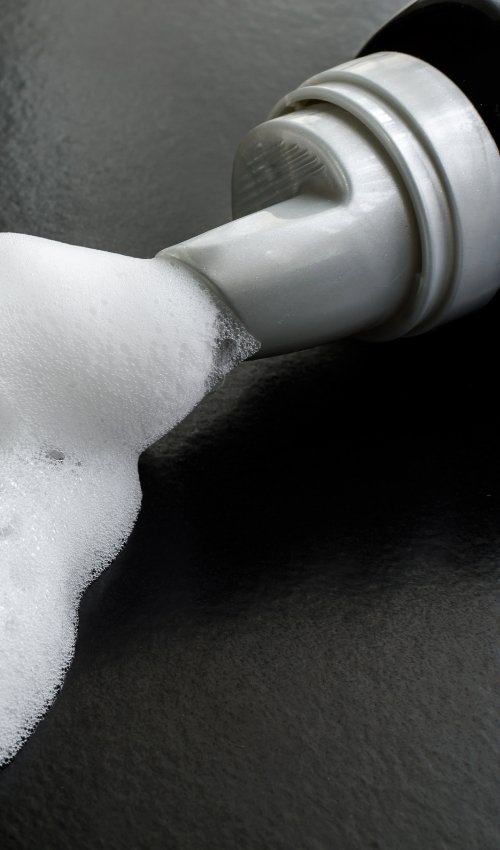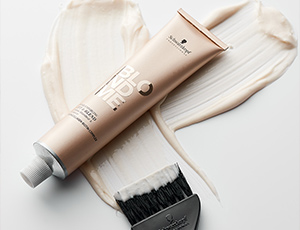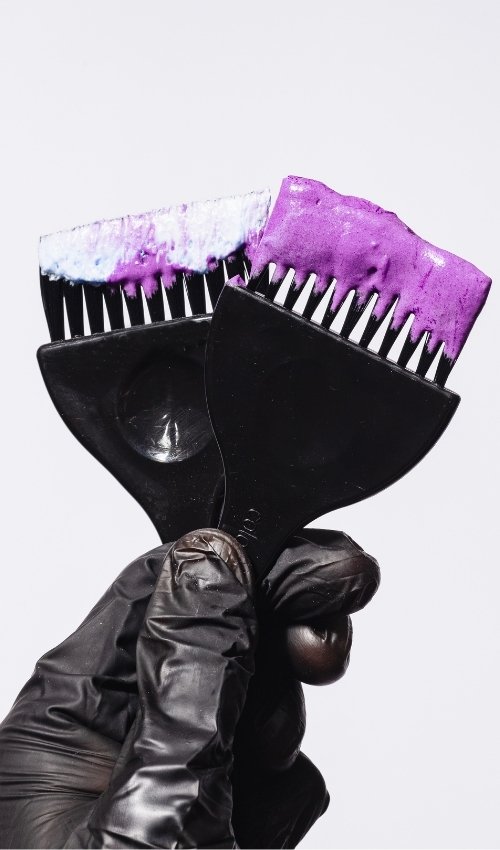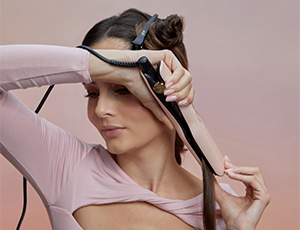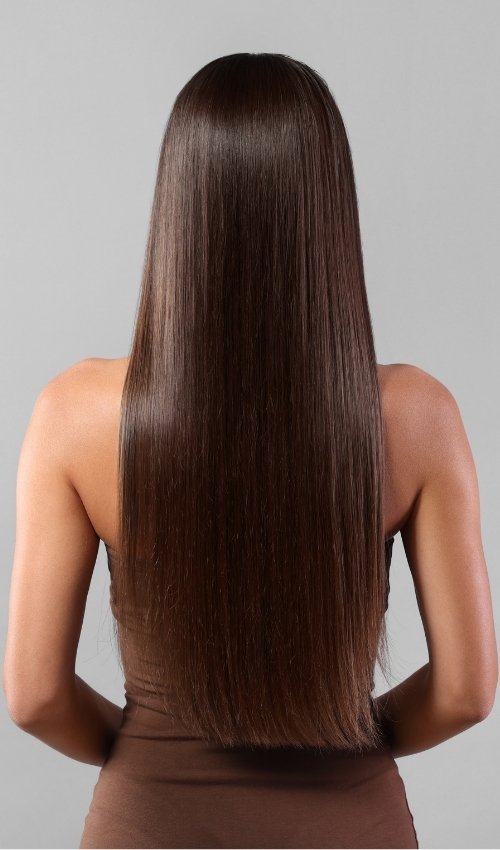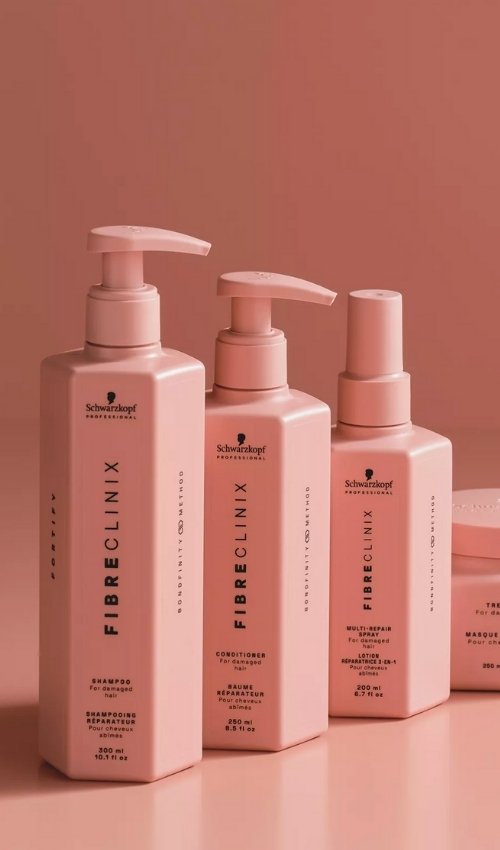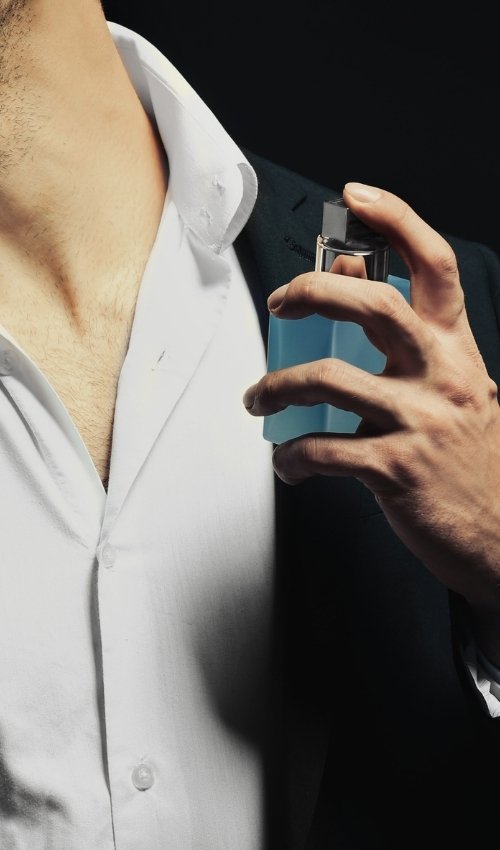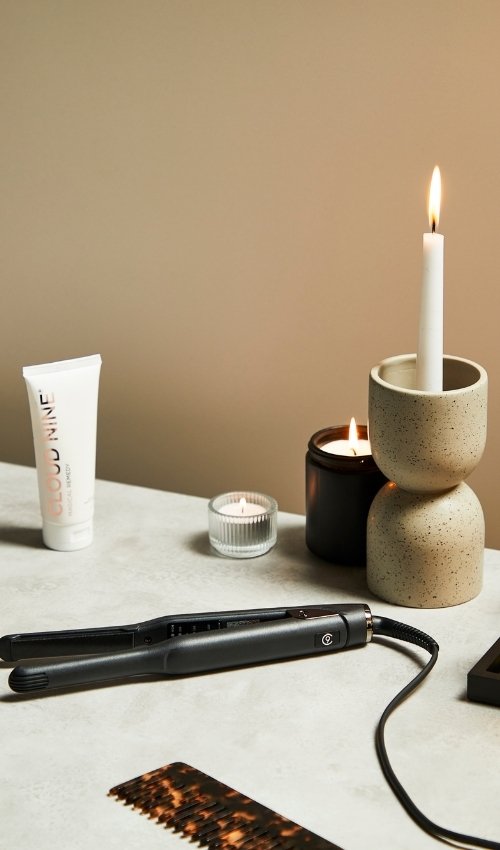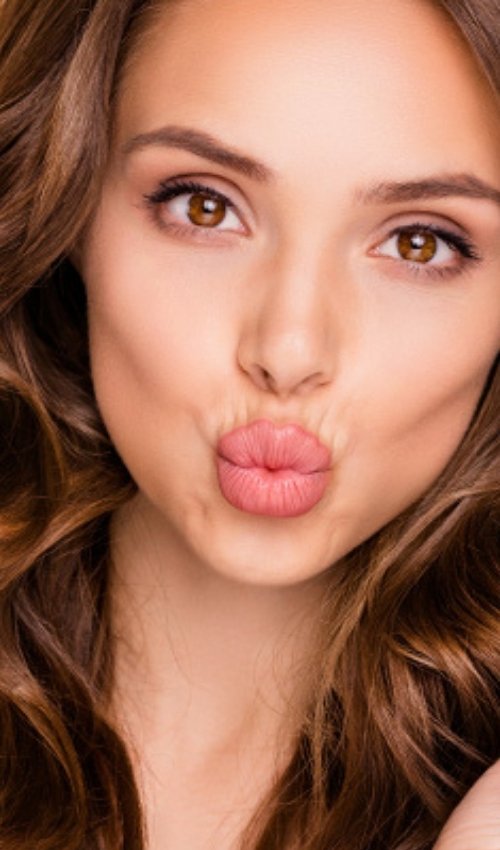Among the ingredients in shampoos that are frequently discussed due to potential negative effects are silicones, parabens, and also sulfates. But what exactly are sulfates? Are they all harmful, or are there exceptions? And what defines a sulfate-free shampoo? Here’s what you need to know about the category of “shampoo without sulfates.”
A Bit of Chemistry: Sulfates Under the Microscope
Sulfates are substances derived from sulfuric acid. They are either salts or esters formed by the chemical reaction of sulfuric acid with certain metals. It’s a misconception to think that sulfates are purely synthetic, lab-made substances. In fact, sulfates also occur naturally. When it comes to the much-discussed topic of sulfate-free shampoos, this means that natural cosmetics and sulfate-containing shampoos are not necessarily contradictory.
Most sulfates are water-soluble, which is particularly important for shampoos. Since a shampoo’s primary purpose is cleansing, the ingredient must interact with water to deliver the desired cleaning effect.
Surfactants Under the Lens
To ensure a shampoo has cleansing power, it needs surfactants—these are active washing agents. They clean thoroughly by producing a foam, which differs in structure depending on the surfactant used. It’s important to know that surfactants clean with negatively charged particles known as anions. These anions attract and bind dirt particles like magnets. When rinsed with water, the foam’s anions are washed away along with the trapped dirt.
This principle of cleaning with the help of sulfates is used across various industries. For example, sulfates are used in car washes to remove stubborn grime, and in household cleaning products as effective surfactants. In cosmetics, they are found in body washes, bath additives, and of course, shampoos.
What Types of Surfactants Are There?
If you’re looking for a curl shampoo without sulfates or another type of sulfate-free shampoo, the good news is that—unlike many other ingredients—sulfates are relatively easy to spot. Many of these substances include the word “sulfate” right in their name, making them easy to identify.
Common examples of such surfactants:
– Ammonium Lauryl Sulfate (ALS)
– Sodium Lauryl Sulfate (SLS)
– Sodium Laureth Sulfate (SLES)
– Sodium Coco Sulfate (SCS)
– Sodium Myreth Sulfate (SMS)
– Sodium Lauryl Sulfoacetate (SLSA)
One of the most widely used by shampoo manufacturers is the classic Sodium Laureth Sulfate. Unfortunately, this particular sulfate is known to be especially harsh.
However, there are also sulfates you won’t easily recognize by name in the INCI (International Nomenclature of Cosmetic Ingredients).
An example of such a sulfate is Sodium Cocoyl Isethionate (SCI).

Shampoos Without Sulfates? The Reason Behind the Discussion
Whether it’s a curl shampoo without sulfates, anti-dandruff shampoo without sulfates, or volumizing shampoo without sulfates – many consumers today intentionally choose sulfate-free shampoos to cleanse their hair. The reason is a debate that has been ongoing for many years and frequently appears in the media: Are sulfates harmful?
The following sections of this article will therefore focus on the disadvantages of sulfates added to shampoos.
Dry Scalp
Many people who now choose a nourishing or curl shampoo without sulfates do so because they have a sensitive scalp. Washing hair too frequently, with hot water, or using shampoos with aggressive surfactants can damage the scalp. It can become dry as it loses essential oils, leading to flaking and itchiness. In particular, Sodium Laureth Sulfate, commonly abbreviated as "SLS," can have such side effects. After using an SLS shampoo, small white flakes may appear on your shoulders – not dandruff, but tiny skin flakes from your scalp.
Dry Hair
Sulfates are surfactants that clean the hair thoroughly but can also cause dryness. However, not all sulfates are harsh cleansers. If your hair is already dry or damaged, colored, or bleached, a sulfate-free shampoo is likely the better option. Harsher sulfates or strong surfactants tend to open the hair’s cuticle layer during washing, which dries out the hair and may cause long-term damage.
Health Concerns
People prone to allergies may find that sulfate-free shampoos are a better alternative. Sulfates can contribute to allergic reactions, especially in those already predisposed. There is also some debate about whether sulfates could be carcinogenic, although conclusive evidence is lacking.
The Right Dose Makes the Difference
Of course, these possible disadvantages can sound alarming. But it’s also important to understand that the concentrations of sulfates used in shampoos are carefully calculated. They remain below regulatory safety limits, which means that sulfate-containing shampoos are still considered safe. Moreover, not all sulfates are equally aggressive. In general, sulfates are not inherently harmful. If you enjoy rich lather while shampooing and your scalp tolerates it well, sulfates are an effective solution.
Which Sulfates Are Milder?
When it comes to shampoos and sulfates, you have two options: choose a sulfate-free shampoo tailored to your hair type – like a curl shampoo without sulfates or a volumizing shampoo without sulfates – or opt for shampoos with milder sulfates. Less recommended are synthetic sulfates like Sodium Laureth Sulfate (SLS) or Sodium Lauryl Sulfate.
More advisable are sulfates with a plant-based component. One such example is Sodium Coco Sulfate, which is derived from coconut. The same applies to Sodium Cocoyl Isethionate (SCI). You’ll also notice that many natural cosmetic brands use milder sulfates. Some natural or organic shampoos contain ingredients like Sodium Coco Sulfate and are considered safe.
Buying a Sulfate-Free Shampoo
Thanks to the easy identification of most sulfates in the INCI list, it’s simple to find the right sulfate-free shampoo for your hair type and needs. Today’s shampoo selection includes numerous sulfate-free options, such as color-protecting shampoo without sulfates, curl shampoo, anti-dandruff shampoo, or volumizing shampoo without sulfates. There are also sulfate-free shampoos for dry and damaged hair.
If you’re looking for a mild shampoo without sulfates, check out the list below of alternative surfactants that are considered particularly gentle and skin-friendly:
- Coco Glucoside
- Lauryl Glucoside
- Sodium Cocoamphoacetate

Which Shampoos Are Safe?
In general, shampoos are safe thanks to modern formulas and regulated dosages. However, certain ingredients are under discussion due to potential side effects or sustainability concerns. Most notably, these include sulfates, but also parabens and silicones – which we’ll cover in the sections below.
What Are Parabens?
Parabens are added to shampoos as preservatives. The term “parabens” is actually a collective term for a group of substances. This group includes the actual paraben, 4-hydroxybenzoic acid, as well as its derivatives – the esters and salts of that acid.
Parabens have two key functions. First, they preserve products, increasing their shelf life. This applies not only to cosmetics and pharmaceuticals but also to food products. Parabens even occur naturally – for example, in cherries. Secondly, parabens prevent the growth of bacteria and fungi, making them a valuable antimicrobial agent.
However, parabens are also widely debated because they can dry out the scalp and make already dry hair feel brittle. There are also discussions around whether parabens may influence hormone balance.
How to Identify Parabens
If you’d prefer to buy a shampoo without parabens, check the ingredient list carefully. Common parabens are easy to recognize: methylparaben, ethylparaben, propylparaben, and butylparaben. Paraben-free shampoos should also not contain parahydroxybenzoates, oxybenzoates, oxybenzoic acid, hydroxybenzoic acid, or hydroxybenzoate.
What Are Silicones?
Silicones are synthetic softeners that belong to the group of polysiloxanes, which are plastic-based polymers. These can be water-soluble or non-water-soluble.
This difference is key in distinguishing between “good” and “bad” silicones. Non-water-soluble silicones coat the hair, forming layer upon layer like a film. While hair may initially appear shiny and feel soft, no moisture or care ingredients can penetrate the hair shaft over time. This can lead to undernourished hair. Therefore, if you choose shampoos with silicones, make sure they contain water-soluble silicones.
Silicones help make hair smooth and easier to detangle. That’s why they’re found in many shampoos, as well as conditioners and treatments. However, if they’re not washed out properly, they build up over time. This “build-up” prevents other care ingredients from reaching the hair, can weigh it down – especially fine hair – and make styling more difficult.
Non-Water-Soluble Silicones to Avoid
To prevent buildup, it’s best to avoid the following silicones:
- Dimethicone
- Cyclomethicone
- Dimethiconol
- Trimethylsilylamodimethicone
- Dimethicone (listed again, often duplicated)
Water-Soluble Silicones
These are more acceptable for occasional use, as they don’t coat the hair:
- Cyclopentasiloxane
- Polysiloxane
- Lauryl Methicone Copolyol
- Dimethicone Copolyol
What Ingredients Should Be Avoided in Shampoo?
While sulfates, parabens, and silicones can have drawbacks, shampoos should be selected based on individual needs. If you regularly use styling products and need a thorough cleanse, a sulfate-containing shampoo might be appropriate – as long as it agrees with your scalp. Similarly, a shampoo with water-soluble silicones can be useful if it helps detangle hair after washing.
There are no universal rules about which ingredients shampoos should or shouldn’t contain. Every hair type is different, as are individual needs. That’s why the shampoo selection is so broad – offering something tailored to every preference. This includes options like vegan shampoos without animal ingredients, sustainable shampoos without microplastics, shampoos made from certified organic ingredients, and natural shampoos.
Which Shampoos Are Free from Silicones, Sulfates, and Parabens?
Whether it's sulfates, silicones, parabens, or other ingredients, the INCI (ingredient list) will show exactly what's in each shampoo. You can also contact manufacturers directly if you’re unsure. Many products are now clearly labeled as sulfate-free, silicone-free, or vegan, making it easier to confidently choose a sulfate-free shampoo.
It’s most important to choose a shampoo based on your hair type. Whether it’s dry or oily, fine or damaged – there’s a suitable shampoo without sulfates, silicones, or parabens for everyone. There are also vegan and sustainable options for all needs. Browse the wide range by category to find the perfect match.
Once you’ve found the right category – whether it’s a sulfate-free curl shampoo or one made for fine, dry, or bleached hair – you can pick your favorite based on your preferences.
Which ingredients should your new sulfate-free shampoo contain? Should it smell like rose or vanilla? Offer natural active ingredients like argan oil, avocado oil, macadamia oil, or mango extract? Do you need to consider allergies? Or are you simply looking for certified natural cosmetics? Our range has it all.
The key is to use matching product lines. Many brands offer shampoos without sulfates and matching conditioners or masks. This allows for a complete routine – cleansing and care. Bonus tip: check the ingredient lists of styling products too. And while the INCI list might seem complex at first, it gets easier with practice, helping you choose the best sulfate- or silicone-free volumizing or curl shampoo for your hair.



